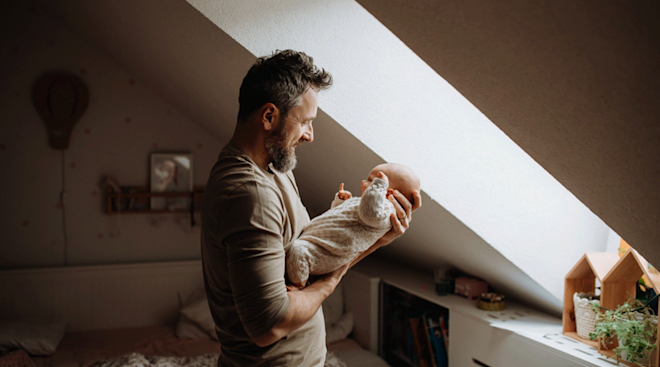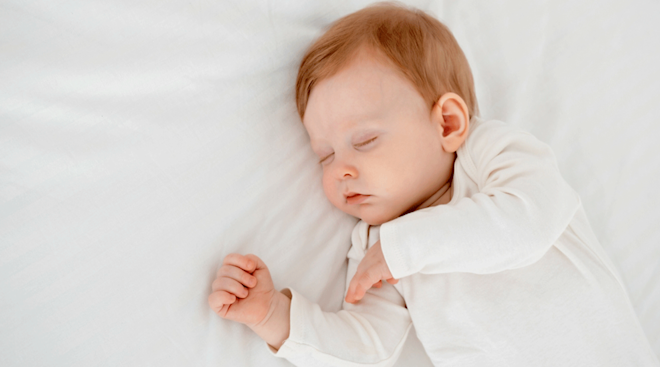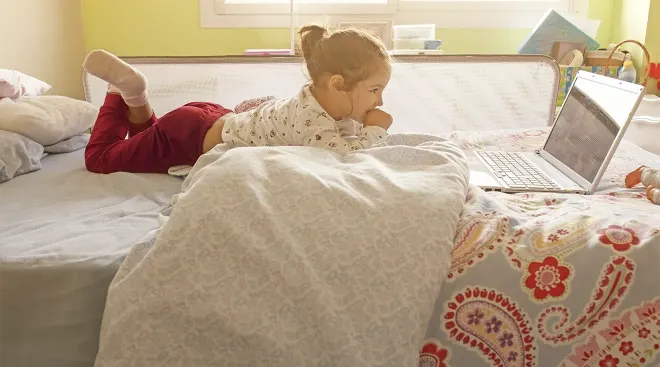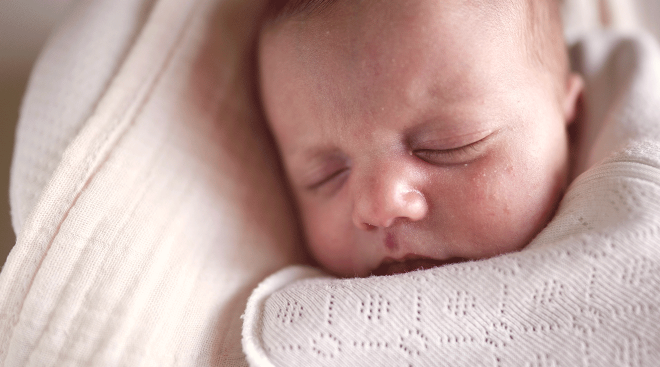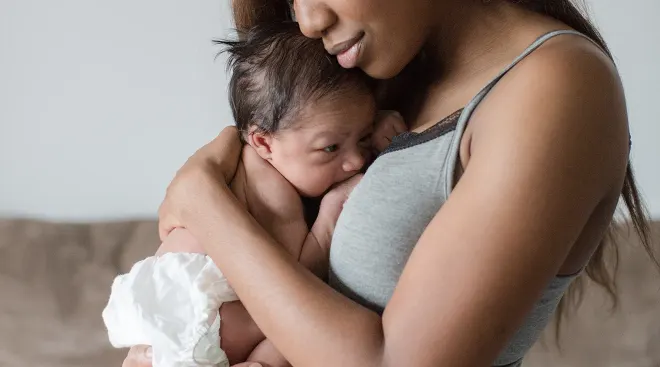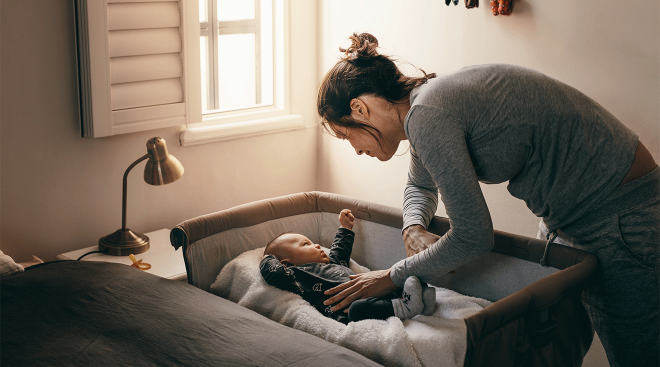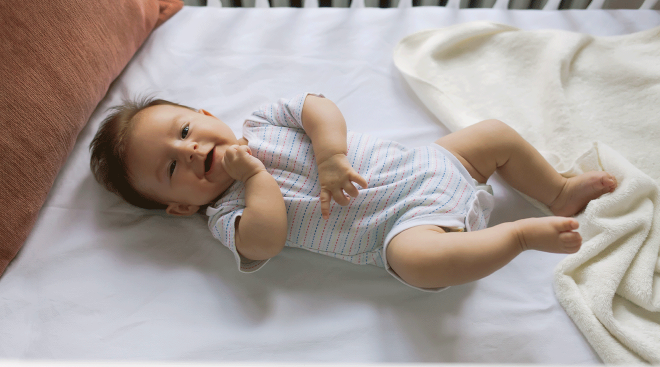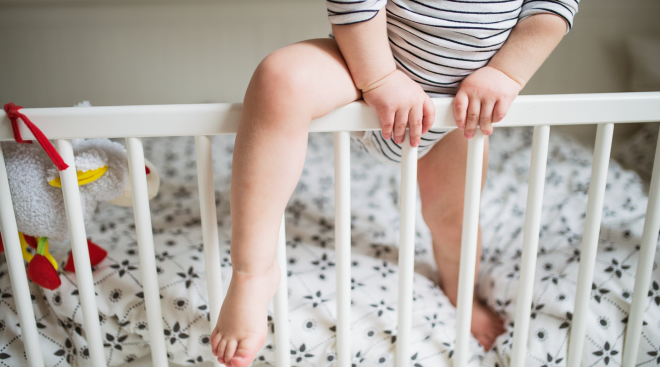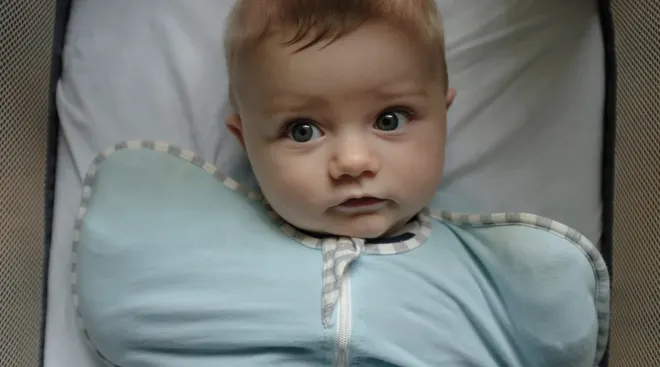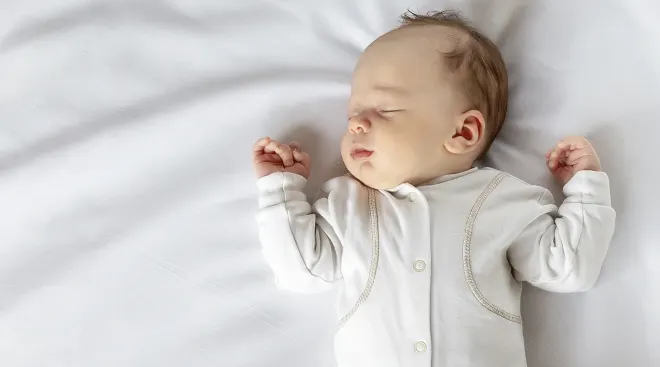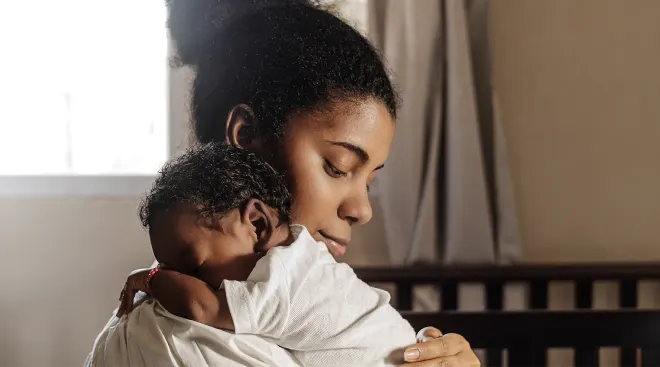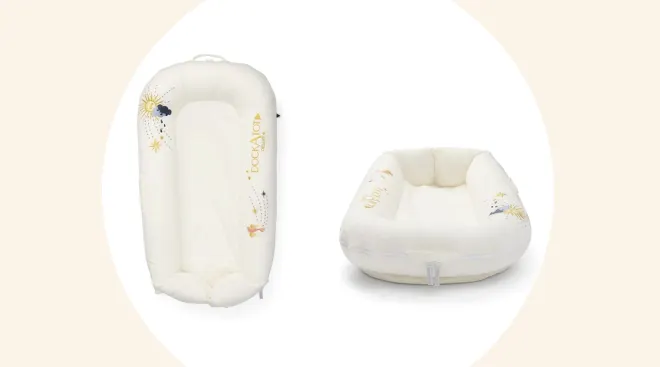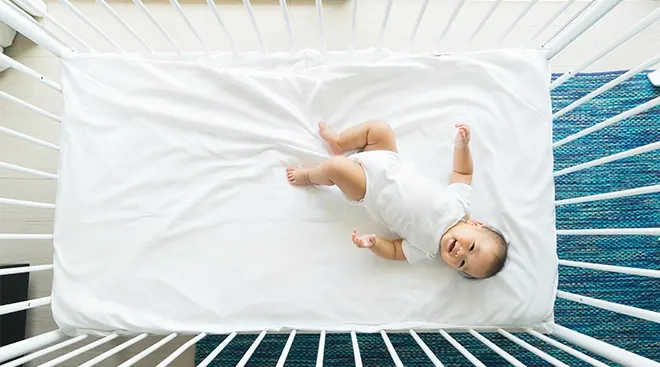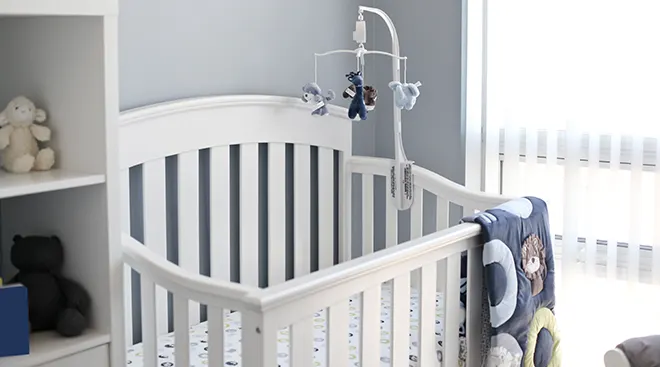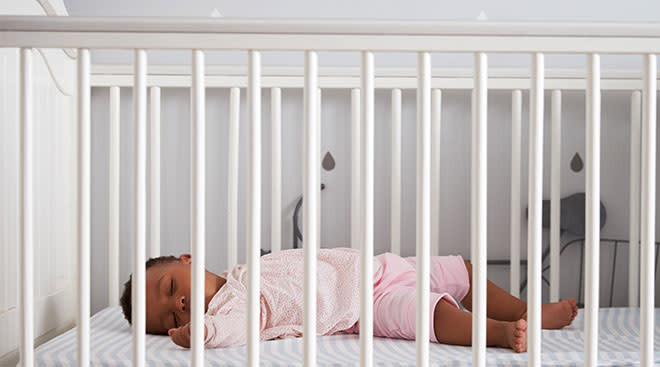The Myths and Truths About Co-Sleeping
Co-sleeping has become a hot-button parenting practice Co-sleep with baby and you increase the risk of SIDS, the majority of pediatricians warn. Don’t co-sleep with baby and you miss out on an important bonding experience, co-sleeping parents say. It’s enough to keep an already overwhelmed mom up all at night (if she weren’t up already) and wishing: if only there were a happy medium. But guess what? There is. Read on to learn the myths and truths of co-sleeping and how to co-sleep safely.
Co-sleeping is often thought to be synonymous with bed sharing—aka letting baby sleep in the same bed with you. But co-sleeping can also mean simply putting baby to sleep in the same room as you but in a separate bed. And doing that gets the American Academy of Pediatrics’ (AAP) seal of approval.
Myth #1: Co-sleeping is always dangerous
If it involves sharing the same bed as baby, most doctors say don’t do it, since it can increase the risk of Sudden Infant Death Syndrome (SIDS). But you can practice safe co-sleeping if you put baby to sleep in a separate bassinet next to your bed—as opposed to in your bed. (This is your happy medium!) In fact, the latest AAP recommendations encourage parents to room-share with baby for at least the first six months, and ideally a year, since having baby nearby actually lowers the risk of SIDS by as much as 50 percent.
“Putting the baby’s crib or bassinet in your room means your baby is right there with you—steps away,” says Rallie McAllister, MD, MPH, a family practitioner in Kingsport, Tennessee, and co-author of The Mommy MD Guide to Pregnancy and Birth. “But she’s in her crib, which is the safest place for a baby to sleep. Your baby’s crib should be her safe haven. This is what’s best—for her and for you—and what will help you both get the most sleep!”
Myth #2: Bed-sharing is okay if you’re a light sleeper
“Being a new mom is exhausting,” McAllister says. “It’s unlikely you’re sleeping lightly! Also, it’s critical you get the best sleep when you can. If you’re co-sleeping and worried about your baby’s safety, you aren’t sleeping as well as you should be.”
Myth #3: A tragedy won’t happen to you
Even if you’re going to doze off for just a few minutes, even if you remove your fluffy duvet to make it a “safe” co-sleeping bed, even if you only do it this one time, the truth is, it doesn’t matter. All it takes is a single opportunity for tragedy to strike. Co-sleeping statistics suggest the majority of sleep-related fatalities in babies can be chalked up to bed-sharing: A 2014 study found that 69 percent of babies were bed sharing at the time of their death.
“I’ve had four families lose infants to SIDS when co-sleeping,” says Natasha Burgert, MD, FAAP, a general pediatrician in Kansas City, MO and the blogger behind KC Kids Doc. “There’s one thing every family who loses a baby to suffocation or asphyxiation when bed-sharing says: ‘I never thought it would happen to us.’”
Truth #1: Co-sleeping is more common than you think
Think none of your friends are doing it? Think again. A 2013 study found that bed-sharing nearly doubled between 1993 and 2010—from 6 percent of parents in 1993 to 13.5 percent in 2010. And that means one parent in your circle is probably sharing a bed with baby.
Truth #2: Co-sleeping can help boost baby’s development
Sharing your room with baby is said to help her senses develop. Babies need to learn to respond to the sensory signals of others, including smells, movements, sounds, touches and heat, says James McKenna, a professor of anthropology at the University of Notre Dame and director of the Mother-Baby Behavioral Sleep Laboratory. “To put baby alone in a room and close the door doesn’t help baby learn, grow and develop those sensory distinctions,” he says. “When baby first enters the world, she’s building a relationship with her mother, father or caregiver. She depends on these people to help teach her to react.”
Truth #3: Co-sleeping shouldn’t kill the romance between you and your partner
Sleep deprivation will probably leave you wanting more sleep than sex, but co-sleeping with baby in your room shouldn’t put a damper on the romance. “Where you decide to let your baby sleep isn’t the sole reason for the dissolution of your marriage or the reason you and your partner are no longer intimate,” McKenna says, emphasizing there are always bigger issues at play. For some parents, room sharing with baby requires them to find other ways and moments to be romantic and actually helps spice things up: “It’s makes the intimacy between me and my husband more interesting because we have to be more creative," says Priea, a co-sleeping mom.
Parents who co-sleep, using a bedside bassinet to avoid any safety pitfalls, tout the practice as a way to improve sleep for both their babies and them and bolster the parent-child bonding experience. Here’s why these parents decided room sharing was for them:
“Our daughter sleeps in our room but in her [bassinet]…We have a co-sleeper too, but she doesn’t like to sleep in that. I love having her in our room.” — Sienna.
“I have seven kids and chose to co-sleep with all. It meant more sleep for both of us, and it was a great way to bond. I have the cot beside me against my bed, so there’s no chance of rolling on top or overheating.” — Martha
“It makes my husband and me feel safer, knowing our daughter is okay in case there’s a fire or a break-in. Plus, those extra hours that we get to spend with her in the morning or at night mean so much to us because we both have very hectic schedules.” — Priea
Updated September 2017
Please note: The Bump and the materials and information it contains are not intended to, and do not constitute, medical or other health advice or diagnosis and should not be used as such. You should always consult with a qualified physician or health professional about your specific circumstances.
Navigate forward to interact with the calendar and select a date. Press the question mark key to get the keyboard shortcuts for changing dates.

































